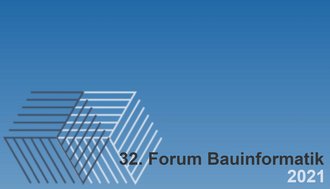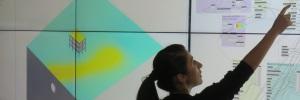From 09th to 10th September 2021 the 32nd Forum Bauinformatik took place in Darmstadt. Four colleagues, Ms. Judith Krischler, Ms. Anna Nast, Mr. Mohamed Alabassy and Mr. Mathias Artus have presented their latest research results at this conference. All contributions can be read in the conference proceedings. The respective page numbers are in parentheses. Ms. Krischler has presented the results on EIR-compliant modeling from the collaboration with Ms. Martina Mellenthin Fillardo (183-191) and her achievements in regarding segmentation of infrastructure projects using early geometry models (259-266). Ms. Nast has explained data preparation for analyzing formwork costs due to construction schedule disruptions (89-97). Mr. Alabassy has presented his automated generation of damage geometry based on image data (123-130). And Mr. Artus explained his concept for integrating temporal information into the existing bridge damage data model (150-156).
Prof. Dr.-Ing. Christian Koch
The Chair of Intelligent Technical Design is concerned with the application of modern information and communication technology (ICT) during the design, the construction and the operation of civil infrastructure, such as buildings, bridges, tunnels, road and pipe networks. In this regard, we use methods of Building Information Modelling (BIM), Computer Vision and Machine Learning as well as Virtual and Augmented Reality to efficiently and sustainably inform decision makers.
"Intelligent Technical Design refers to a design approach that utilizes advanced technologies, such as artificial intelligence and machine learning, to optimize the design process and improve the performance, efficiency, and sustainability of building and infrastructure systems. It integrates data-driven insights, real-time performance monitoring, and machine learning algorithms into the design process to make informed decisions, automate manual processes, and reduce the risk of human error. The goal of Intelligent Technical Design is to create high-performing, sustainable, and efficient building and infrastructure systems." [ChatGPT, 2023]

Five publications during the 32th Forum Bauinformatik
Four colleagues have presented five new publications during the 32th Forum Bauinformatik.








